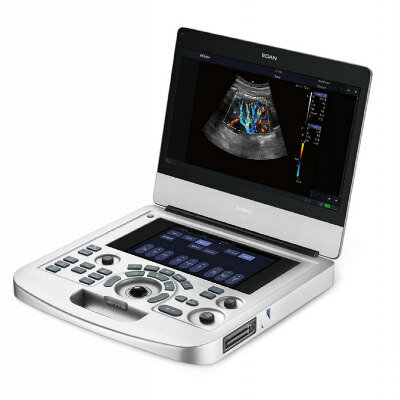Smaller, Less Expensive Portable MRI Systems to Expand Applications in Various Health Care Settings
|
By MedImaging International staff writers Posted on 19 Jul 2023 |

Magnetic Resonance Imaging (MRI) machines offer detailed views of the body's non-bony structures like the brain, muscles, and ligaments, and are instrumental in identifying tumors and diagnosing various ailments. Nonetheless, their high cost, bulkiness, and dependency on powerful magnets limit their availability, primarily to large healthcare facilities. In response to this, companies are designing portable MRI machines that rely on lower-strength magnetic fields. These innovative models hold the potential to extend MRI applications, possibly being incorporated in mobile environments like ambulances. Their reduced cost could also enable greater accessibility, especially in underprivileged communities and developing nations. However, further research is crucial to comprehend the connection between low-field images and the underlying tissue properties they represent.
Researchers at the National Institute of Standards and Technology (NIST, Gaithersburg, MD, USA) have been exploring ways to advance and validate the use of low-field MRI technology for creating images with weaker magnetic fields. In a recent study, the team employed a portable MRI machine available in the market to examine brain tissue characteristics at low magnetic field strength. They used a 64 millitesla magnetic field, significantly lower than traditional MRI machines, to image the brain tissue of ten volunteers. The MRI system was able to produce distinctive images of the entire brain, including its gray matter, white matter, and cerebrospinal fluid. Each of these brain constituents responds uniquely to low magnetic fields, generating distinct signals that offer quantitative information about each component.
Separately, NIST researchers are also investigating materials that could dramatically improve the image quality of low-field MRI scans. MRI contrast agents, which enhance image contrast, making it easier for radiologists to identify anatomical features or evidence of disease, are generally used in MRI at conventional magnetic field strengths but are relatively new in the area of low-field MRI scanners. Researchers have discovered that contrast agents behave differently at lower field strengths, indicating a potential to explore new types of magnetic materials for image enhancement.
The team at NIST tested several magnetic contrast agents' sensitivity at low magnetic fields. The findings revealed that iron oxide nanoparticles were more effective than conventional contrast agents made from gadolinium, a rare-earth metal. At low magnetic field strength, the nanoparticles yielded sufficient contrast utilizing only about one-ninth of the concentration of the gadolinium particles. Moreover, the human body can break down iron oxide nanoparticles, thereby preventing potential accumulation in tissue, unlike gadolinium, which could affect the interpretation of future MRI scans if not accounted for.
Related Links:
NIST
Latest MRI News
- PET/MRI Improves Diagnostic Accuracy for Prostate Cancer Patients
- Next Generation MR-Guided Focused Ultrasound Ushers In Future of Incisionless Neurosurgery
- Two-Part MRI Scan Detects Prostate Cancer More Quickly without Compromising Diagnostic Quality
- World’s Most Powerful MRI Machine Images Living Brain with Unrivaled Clarity
- New Whole-Body Imaging Technology Makes It Possible to View Inflammation on MRI Scan
- Combining Prostate MRI with Blood Test Can Avoid Unnecessary Prostate Biopsies
- New Treatment Combines MRI and Ultrasound to Control Prostate Cancer without Serious Side Effects
- MRI Improves Diagnosis and Treatment of Prostate Cancer
- Combined PET-MRI Scan Improves Treatment for Early Breast Cancer Patients
- 4D MRI Could Improve Clinical Assessment of Heart Blood Flow Abnormalities
- MRI-Guided Focused Ultrasound Therapy Shows Promise in Treating Prostate Cancer
- AI-Based MRI Tool Outperforms Current Brain Tumor Diagnosis Methods
- DW-MRI Lights up Small Ovarian Lesions like Light Bulbs
- Abbreviated Breast MRI Effective for High-Risk Screening without Compromising Diagnostic Accuracy
- New MRI Method Detects Alzheimer’s Earlier in People without Clinical Signs
- MRI Monitoring Reduces Mortality in Women at High Risk of BRCA1 Breast Cancer
Channels
Radiography
view channel
Novel Breast Imaging System Proves As Effective As Mammography
Breast cancer remains the most frequently diagnosed cancer among women. It is projected that one in eight women will be diagnosed with breast cancer during her lifetime, and one in 42 women who turn 50... Read more
AI Assistance Improves Breast-Cancer Screening by Reducing False Positives
Radiologists typically detect one case of cancer for every 200 mammograms reviewed. However, these evaluations often result in false positives, leading to unnecessary patient recalls for additional testing,... Read moreUltrasound
view channel
Deep Learning Advances Super-Resolution Ultrasound Imaging
Ultrasound localization microscopy (ULM) is an advanced imaging technique that offers high-resolution visualization of microvascular structures. It employs microbubbles, FDA-approved contrast agents, injected... Read more
Novel Ultrasound-Launched Targeted Nanoparticle Eliminates Biofilm and Bacterial Infection
Biofilms, formed by bacteria aggregating into dense communities for protection against harsh environmental conditions, are a significant contributor to various infectious diseases. Biofilms frequently... Read moreNuclear Medicine
view channel
New SPECT/CT Technique Could Change Imaging Practices and Increase Patient Access
The development of lead-212 (212Pb)-PSMA–based targeted alpha therapy (TAT) is garnering significant interest in treating patients with metastatic castration-resistant prostate cancer. The imaging of 212Pb,... Read moreNew Radiotheranostic System Detects and Treats Ovarian Cancer Noninvasively
Ovarian cancer is the most lethal gynecological cancer, with less than a 30% five-year survival rate for those diagnosed in late stages. Despite surgery and platinum-based chemotherapy being the standard... Read more
AI System Automatically and Reliably Detects Cardiac Amyloidosis Using Scintigraphy Imaging
Cardiac amyloidosis, a condition characterized by the buildup of abnormal protein deposits (amyloids) in the heart muscle, severely affects heart function and can lead to heart failure or death without... Read moreGeneral/Advanced Imaging
view channel
New AI Method Captures Uncertainty in Medical Images
In the field of biomedicine, segmentation is the process of annotating pixels from an important structure in medical images, such as organs or cells. Artificial Intelligence (AI) models are utilized to... Read more.jpg)
CT Coronary Angiography Reduces Need for Invasive Tests to Diagnose Coronary Artery Disease
Coronary artery disease (CAD), one of the leading causes of death worldwide, involves the narrowing of coronary arteries due to atherosclerosis, resulting in insufficient blood flow to the heart muscle.... Read more
Novel Blood Test Could Reduce Need for PET Imaging of Patients with Alzheimer’s
Alzheimer's disease (AD), a condition marked by cognitive decline and the presence of beta-amyloid (Aβ) plaques and neurofibrillary tangles in the brain, poses diagnostic challenges. Amyloid positron emission... Read more.jpg)
CT-Based Deep Learning Algorithm Accurately Differentiates Benign From Malignant Vertebral Fractures
The rise in the aging population is expected to result in a corresponding increase in the prevalence of vertebral fractures which can cause back pain or neurologic compromise, leading to impaired function... Read moreImaging IT
view channel
New Google Cloud Medical Imaging Suite Makes Imaging Healthcare Data More Accessible
Medical imaging is a critical tool used to diagnose patients, and there are billions of medical images scanned globally each year. Imaging data accounts for about 90% of all healthcare data1 and, until... Read more
Global AI in Medical Diagnostics Market to Be Driven by Demand for Image Recognition in Radiology
The global artificial intelligence (AI) in medical diagnostics market is expanding with early disease detection being one of its key applications and image recognition becoming a compelling consumer proposition... Read moreIndustry News
view channel
Bayer and Google Partner on New AI Product for Radiologists
Medical imaging data comprises around 90% of all healthcare data, and it is a highly complex and rich clinical data modality and serves as a vital tool for diagnosing patients. Each year, billions of medical... Read more




















